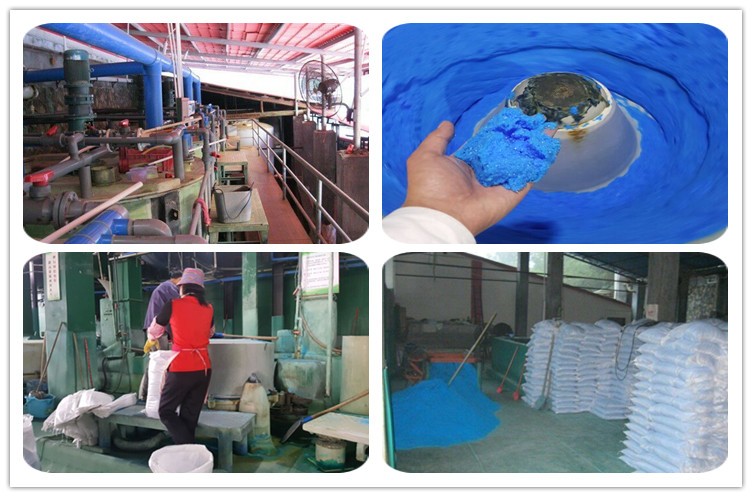Health hazards: It has a stimulating effect on the gastrointestinal tract, causing nausea, vomiting, copper taste in the mouth, and heartburn when swallowed by mistake. Severe cases have abdominal cramps, hematemesis, and melena. Can cause severe renal damage and hemolysis, jaundice, anemia, hepatomegaly, hemoglobinuria, acute renal failure and uremia. Irritating to eyes and skin. Long-term exposure can cause contact dermatitis and irritation of the nasal and eye mucous membranes and gastrointestinal symptoms.
Toxicity: It is moderately toxic.
Leakage treatment: isolate the leakage pollution area, and set up warning signs around. Emergency personnel wear gas masks and gloves. Rinse with plenty of water and place the diluted wash into the waste water system. If there is a large amount of leakage, collect and recycle or transport it to a waste disposal site for disposal.
Protective measures
Respiratory protection: Workers should wear dust masks.
Eye Protection: A safety face shield may be used.
Protective clothing: Wear work clothes.
Hand Protection: Wear protective gloves if necessary.
Operation protection: closed operation, provide sufficient local exhaust. Operators must undergo special training and strictly abide by operating procedures. It is recommended that operators wear self-priming filter dust masks, chemical safety goggles, anti-virus infiltration work clothes, and rubber gloves. Avoid generating dust. Avoid contact with acids and bases. When handling, it should be lightly loaded and unloaded to prevent damage to packaging and containers. Equipped with leakage emergency treatment equipment. Empty containers may be harmful residues.
Others: Smoking, eating and drinking are prohibited at the workplace. After work, shower and change. Pay attention to personal hygiene. Conduct pre-employment and regular physical examinations.
Post time: Oct-21-2022


